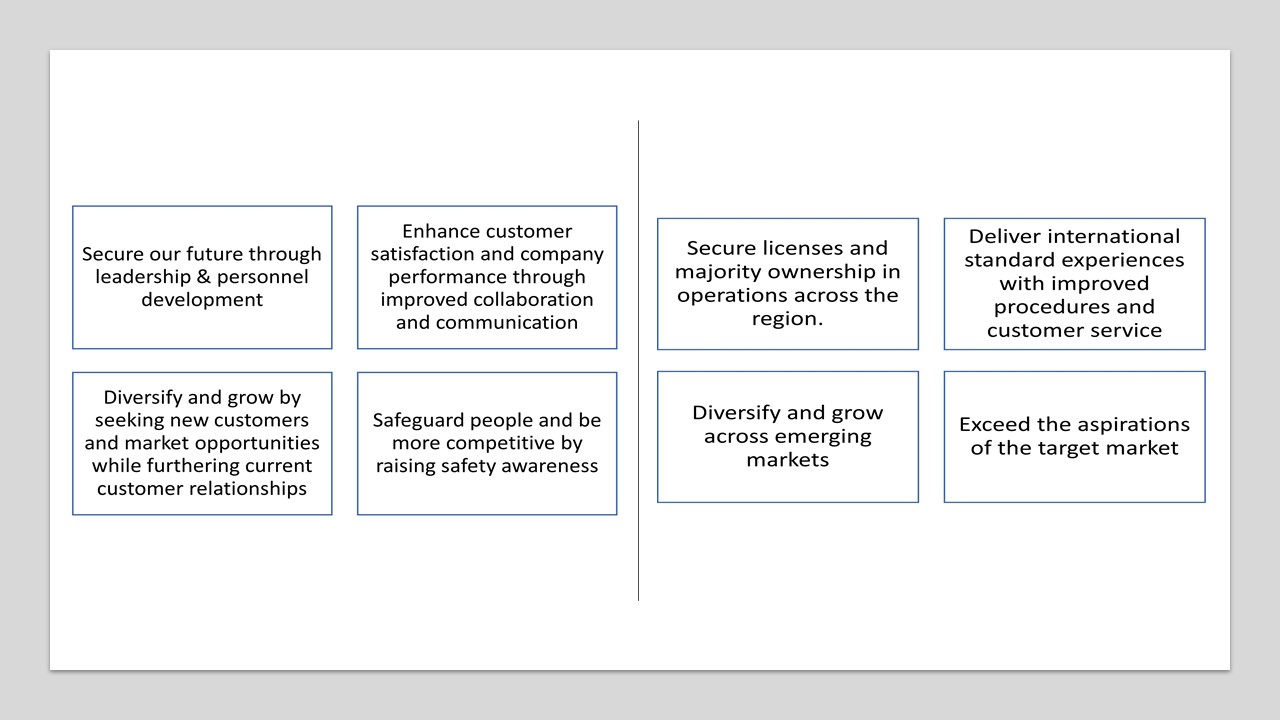
Don’t have time to read the entire post now? Watch this video with the summary.
Many of my clients complain that their managers and/or company do not provide enough direction to them and their teams. That apart from sales and efficiency goals there is no shared vision or mission.
My immediate first question is ‘what is stopping you from creating the vision yourself at least for your team?’ And the response is an unequivocal ‘nothing’. My next question is ‘what is the worst that could happen?’, which is followed by ‘that my manager already has a defined vision’, ‘that my manager does not agree with my vision’, or an equivalent of these responses.
One of the best of advice I received a few years ago was to create a target operating model. I had never heard about this concept before then. I was very fortunate that the colleague who advised me also helped me create the template and first version of content.
A target operating model is a description of the desired state of the operating model of an organization. Do not let the word ‘organization’ discourage you from adapting this document to your own group or function.
If you search for a target operating model, you will find a lot of information and ways to do it. Fortunately, you can start with the three main elements – vision, mission, and strategy – and build from there. Other components I added in the one for my function were team values and brand, list of routines (meetings, reports, etc.), an inventory of expertise and skills I wanted the overall team to have, and high-level process maps for each of the main functions I managed.
I would like to focus on the three main elements first. I assure you that your time will be well invested in defining these statements for your team. It will also score big points with your boss as it would immediately position you as a senior leader who is thinking about the future and the strategy instead of only focusing on the immediate execution.
Vision
In an ongoing survey conducted by Harvard, 72% of participants chose ‘vision’ as the second highest requirement of a leader following honesty.
The way I simplify the concept of vision is ‘what do we want to be when we grow up?’ How does this team or function look like in the future? A vision is both aspirational and inspirational. According to this article, having a vision has several advantages including accelerating momentum, the ability to separate opportunities from distractions, and attracting the best and right talent for your team.
The Project Manager blog describes the best practices to consider when writing a vision statement: conciseness, clarity, being future-oriented, stability, inspiration, etc.
See these two examples and think which one inspires you the most:

Mission
A mission statement is a formal summary of the aims and values of a company, organization, or individual. A mission statement provides perfect clarity behind the “what,” the “who,” and the “why,” of your company.
In other words, why do we (this team, this function) exist? What do we bring to the table?
The mission statement must be clear, succinct, and not generic.
As stated in this article, to craft a mission statement, consider what your team/function does, how you do what you do, and why does your team do it.
And this article includes three common mistakes to avoid when crafting the mission statement – having little to no inspiration, lacking personality, and using buzzwords and jargon.
See these two examples and consider how clarity, conciseness and uniqueness are reflected

Strategy
The strategy encompasses how we are going to get to the vision while aligned to the mission.
It is the ‘how are we going to do this?’ side of the equation.
According to this article in Forbes, these are some of the considerations to keep in mind when articulating the strategy:
- What value will you create?
- What do you need to be really good at?
- What sales and distribution channels will you use?
- What kind of revenue and profits should you expect?
- Why do you think you can beat the competition?
To illustrate, see these two examples, which answer the question of ‘how will we do it?’

I appreciate how daunting this task could sound especially if you have not done it before. Like everything else, start small and build from there. You are already taking the first step by reading this blog and the articles included here.
A potential next action could be to draft whichever element you think would come naturally to you. Write the first version, let it simmer for a couple of days, work on the next version and so on. Strive for progress instead of perfection.
Of course, you will not create these items in a vacuum. You will involve your team, your seniors, and your peers. You can even position yourself as your manager’s consultant if he or she has not gone through this exercise.
In a prior post I wrote about how to elevate yourself to that more senior position. These are the kinds of content you want to start creating at this point. This would be a clear reflection of your thought leadership, expertise, and influence. And it will definitely set you apart.
What are your thoughts about vision, mission, and strategy? Which one would you try first? Please, let us know in the comments. You can write in English, Spanish, Portuguese, or French.
To join our email list and receive helpful articles, humor, and the latest posts, please complete this form with your name and email. In gratitude, we will send you a free e-book on how to become an emotionally intelligent leader.
My mission is to help women transition from mid to senior level leadership positions by creating awareness, increasing emotional intelligence, and unveiling the tools and choices available to them, so they can confidently realize and fulfill their potential.

